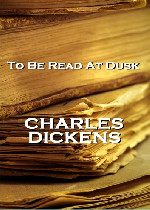
One, two, three, four, five. There were five of them. Five couriers, sitting on a bench outside the convent on the summit of the Great St. Bernard in Switzerland, looking at the remote heights, stained by the setting sun as if a mighty quantity of red wine had been broached upon the mountain top, and had not yet had time to sink into the snow. This is not my simile. It was made for the occasion by the stoutest courier, who was a German. None of the others took any more notice of it than they took of me, sitting on another bench on the other side of the convent door, smoking my cigar, like them, and—also like them—looking at the reddened snow, and at the lonely shed hard by, where the bodies of belated travellers, dug out of it, slowly wither away, knowing no corruption in that cold region.
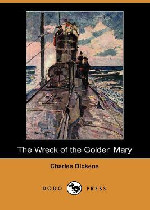
The Wreck of the Golden Mary(金玛丽号沉船记) 立即阅读
I was apprenticed to the Sea when I was twelve years old, and I have encountered a great deal of rough weather, both literal and metaphorical. It has always been my opinion since I first possessed such a thing as an opinion, that the man who knows only one subject is next tiresome to the man who knows no subject. Therefore, in the course of my life I have taught myself whatever I could, and although I am not an educated man, I am able, I am thankful to say, to have an intelligent interest in most things.

Doctor Marigold, named for the man who delivered him, is a "cheap-jack" who hawks sundries from a traveling cart he inhabits with his wife and his daughter Sophy. The mother beats Sophy, but Marigold, feeling powerless, does nothing to stop her. When the child dies of a fever, her guilt-wracked mother commits suicide.
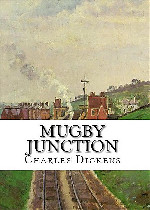
"Mugby Junction" is a set of short stories written in 1866 by Charles Dickens and collaborators Charles Collins, Amelia B. Edwards, Andrew Halliday, and Hesba Stretton. It was first published in a Christmas edition of the magazine All the Year Round. Dickens penned a majority of the issue, including the frame narrative in which "the Gentleman for Nowhere," who has spent his life cloistered in the firm Barbox Brothers & Co., makes use of his new-found freedom in retirement to explore the rail lines that connect with Mugby Junction. Dickens's collaborators each contributed an individual story to the collection.
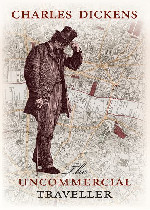
The Uncommercial Traveller(不做生意的旅行者) 立即阅读
The Uncommercial Traveller is a collection of literary sketches and reminiscences written by Charles Dickens, published in 1860-1861. In 1859 Dickens founded a new journal called All the Year Round and the Uncommercial Traveller articles would be among his main contributions. He seems to have chosen the title and persona of the Uncommercial Traveller as a result of a speech he gave on 22 December 1859 to the Commercial Travellers' School London in his role as honorary chairman and treasurer. The persona sits well with a writer who liked to travel, not only as a tourist, but also to research and report what he found visiting Europe, America and giving book readings throughout Britain.
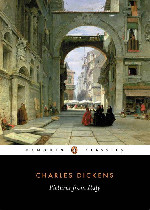
Pictures from Italy(意大利风光) 立即阅读
Pictures from Italy is a travelogue by Charles Dickens, written in 1846. The book reveals the concerns of its author as he presents, according to Kate Flint, the country "like a chaotic magic-lantern show, fascinated both by the spectacle it offers, and by himself as spectator". In 1844, Dickens took a respite from writing novels and for several months traveled through France and Italy with his family. They visited the most famous sights: Genoa, Rome, Naples (with Vesuvius still smouldering), Florence and Venice. In his travelogue the author portrays a nation of great contrasts: grandiose buildings and urban desolation, and everyday life beside ancient monuments. But it is his encounters with Italy's colorful street life that capture the imagination.
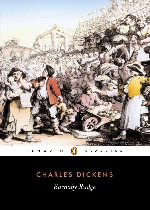
Barnaby Rudge: A Tale of the Riots of Eighty (commonly known as Barnaby Rudge) is a historical novel by British novelist Charles Dickens. Barnaby Rudge was one of two novels (the other was The Old Curiosity Shop) that Dickens published in his short-lived (1840–1841) weekly serial Master Humphrey's Clock. Barnaby Rudge is largely set during the Gordon Riots of 1780. Barnaby Rudge was the fifth of Dickens' novels to be published. It had originally been planned to appear as his first, but changes of publisher led to many delays, and it first appeared in serial form in the Clock from February to November 1841.
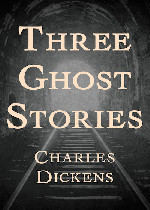
Three Ghost Stories(三个鬼故事) 立即阅读
As a gifted writer with a strong interest in supernatural phenomena, Charles Dickens produced a string of ghost stories with enduring charm. Three of them are presented here, of which The Signal Man is one of the best known. Though quite different from his most celebrated realistic and humorous critical novels, these ghost stories, Gothic and grotesque as they are, are of good portrayal, and worth a read/listen.
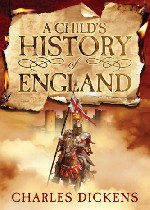
A Child's History of England(写给孩子们看的英国史) 立即阅读
A Child's History of England is a book by Charles Dickens. It first appeared in serial form in Household Words, running from 25 January 1851 to 10 December 1853. Dickens also published the work in book form in three volumes: the first volume on 20 December 1851, the second on 25 December 1852 and the third on 24 December 1853. Although the volumes were published in December, each was postdated the following year. Dickens dedicated the book to "My own dear children, whom I hope it may help, bye and bye, to read with interest larger and better books on the same subject". The history covered the period between 50 BC and 1689, ending with a chapter summarising events from then until the accession of Queen Victoria.
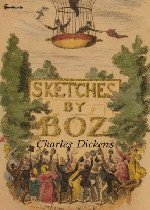
Sketches by "Boz," Illustrative of Every-day Life and Every-day People (commonly known as Sketches by Boz) is a collection of short pieces Charles Dickens originally published in various newspapers and other periodicals between 1833 and 1836. They were re-issued in book form, under their current title, in February and August 1836, with illustrations by George Cruikshank. The first complete one volume edition appeared in 1839. The 56 sketches concern London scenes and people, and the whole work is divided into four sections: "Our Parish", "Scenes", "Characters" and "Tales". The material in the first three sections consists of non-narrative pen-portraits, but the last section comprises fictional stories.